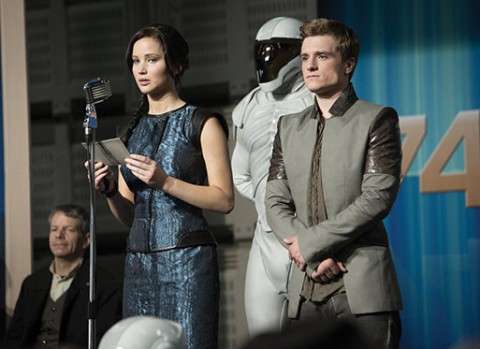Capitol spectacle

At the beginning of The Hunger Games: Catching Fire, the second film based on Suzanne Collins’s novels, Katniss Everdeen (played by Jennifer Lawrence) is relieved that she has made it out of the Hunger Games alive, along with her friend Peeta Mellark (Josh Hutcherson). Every year the ruling power known as the Capitol organizes a televised contest in which children—two selected from each of the Capitol’s 12 districts—are required to fight to the death.
Katniss’s relief makes it all the more crushing when the Capitol—uneasy because Katniss has become a beacon of hope—announces that the “tributes” fighting in the next round will be drawn from past victors. Since Katniss is the only female victor in the history of her district, there’s no doubt that she’ll be sent back into the arena.
Catching Fire explores a world in which subjugated people stand on the edge of being pushed too far. The fast-moving plot is well suited for the screen. The story’s handling of gender, race and class feels elegant and contemporary. Collins avoids clumsy moralism by offering a good story, which centers on an ordinary girl whose courage and humanity shine. In the plot’s romance, gender depictions don’t just defy stereotypes; they reveal how those stereotypes can tyrannize and brutalize. The film offers an alternative love story that is tender and sweetly human.





